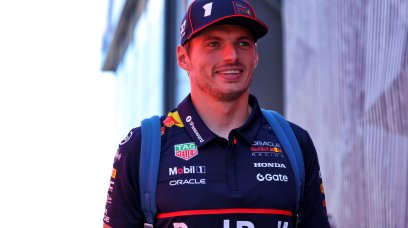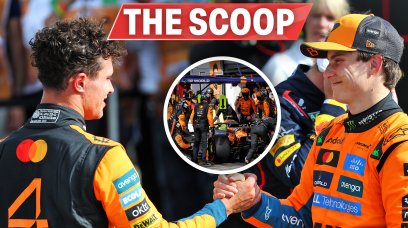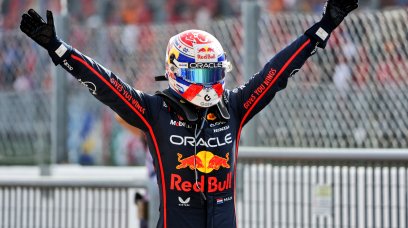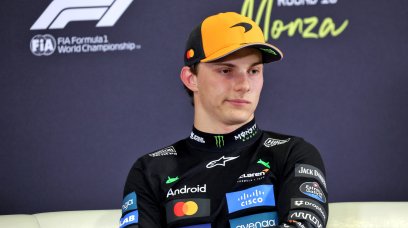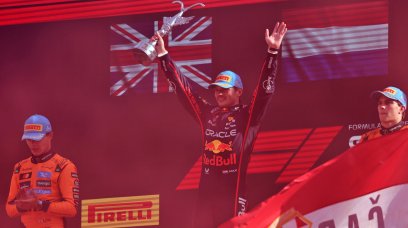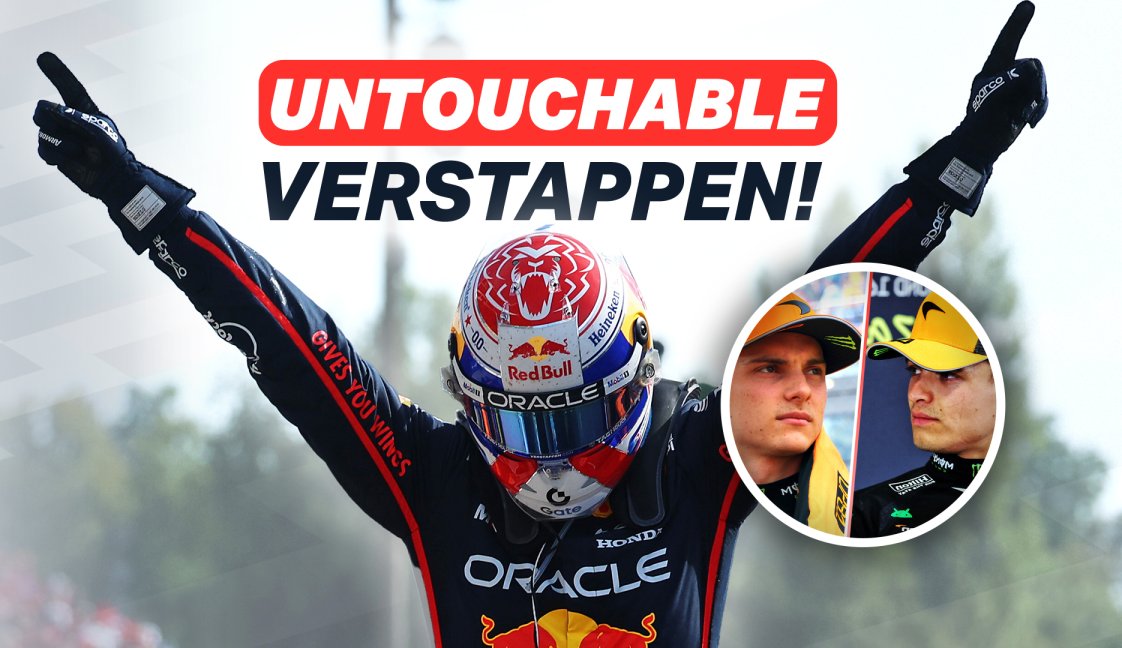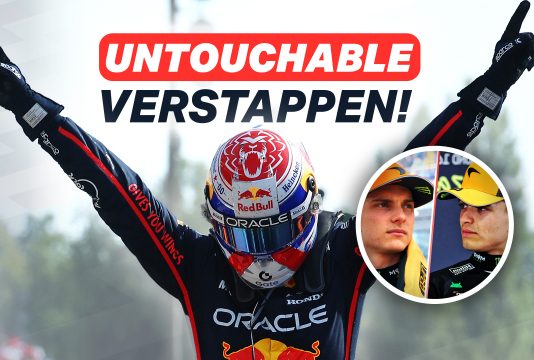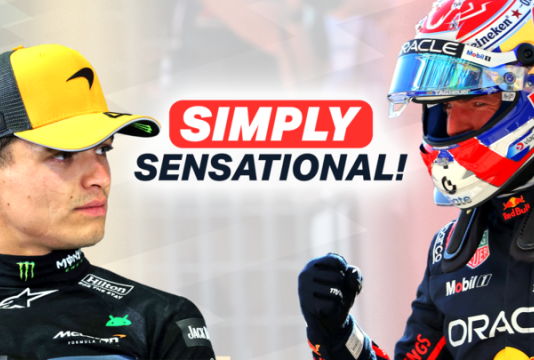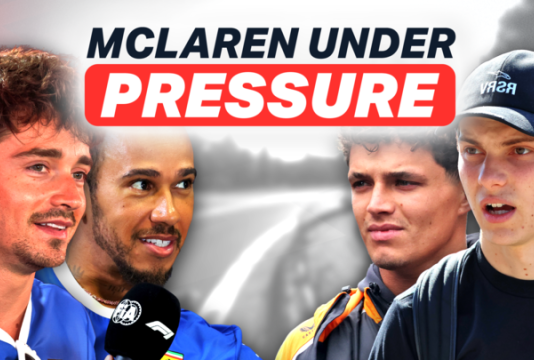Italian GP
Autodromo Nazionale Monza- Free practice 1 FP1 04 Sep 2026 -
- Free practice 2 FP2 04 Sep 2026 -
- Free practice 3 FP3 05 Sep 2026 -
- Qualifying Quali 05 Sep 2026 -
- Race Race 06 Sep 2026 -
The Italian Grand Prix, much like the British Grand Prix, has been a feature on the calendar since F1's inception in 1950. The race has been run consistently at Monza, bar 1980, when it was held at Imola. The F1 Italian Grand Prix will be held on September 7, 2025.
Stats
| First held | 1950 |
| Laps | 53 |
| Circuit length | 5.793 kilometres |
| Lap record | 1:21.046 (2004) |
| Winner in 2024 | Charles Leclerc |
| Second in 2024 | Oscar Piastri |
| Third in 2024 | Lando Norris |
Winners
| Winner 2024 | Charles Leclerc |
| Winner 2023 | Max Verstappen |
| Winner 2022 | Max Verstappen |
| Winner 2021 | Daniel Ricciardo |
| Winner 2020 | Pierre Gasly |
| Winner 2019 | Charles Leclerc |
| Winner 2018 | Lewis Hamilton |
F1 2025 Italian GP | Monza Schedule & Start Times
Much like several other circuits in Europe, the Italian Grand Prix precedes Formula 1 itself.
Located just outside the city of Milan, Monza is the fastest track on the F1 calendar, with cars averaging over 260 km/h per lap. Also called the cathedral of speed, the circuit is one of Formula 1's most iconic venues and the home race for the sport's oldest team, Ferrari, while also serving as the local territory for AlphaTauri, who incidentally attained their only two wins in the sport at the hallowed racetrack.
While the original version of the circuit featured a banked configuration mixed with a road layout, from the 1962 season onwards the event was run strictly on the road course, which is similar to the modern-day version of the track.
The Italian Grand Prix is the fifth oldest national Grand Prix, having been held since 1921. It is one of two Grands Prix (along with the British) that has been part of every F1 World Championship season since it was introduced in 1950.
Every Italian Grand Prix in the World Championship era has been held at the Autodromo Nazionale di Monza, except in 1980, when it took place at Imola.
When is the 2025 Italian Grand Prix on the F1 calendar?
The Italian Grand Prix is scheduled to take place on the weekend of 5 - 7 September, and is set to be the 16th race in the 2025 F1 season. The first two free practice sessions will be held on 5 September, with qualifying on Saturday 6 September at 15:00 BST.
Start time of the 2025 Italian Grand Prix
The Italian Grand Prix starts on Sunday 7 September at 14:00 BST. The race can be followed live on RacingNews365's blog.
F1 schedule Italian GP
| Session | Date | Time |
|---|---|---|
| Free practice 1 | Friday 4 September | - |
| Free practice 2 | Friday 4 September | - |
| Free practice 3 | Saturday 5 September | - |
| Qualifying | Saturday 5 September | - |
| Race | Sunday 6 September | - |
History of the F1 Italian Grand Prix
The first Italian Grand Prix was held on 4 September 1921 at a 17.3km circuit near Montichiari. However, the switch to the course at Monza – which is located just outside the city of Milan – was made in time for the 1922 edition of the race.
The Autodromo was just the third permanent track built in the world at the time, with Brooklands in England and Indianapolis in the United States being the others.
Initially 10km long, the circuit featured a flat banked section that combined with a road layout. The first of many tragedies to befall the venue happened at the 1928 race, with Emilio Materassi losing control of his Talbot 700 whilst trying to overtake Giulio Foresti.
Materassi's car swerved to the left and, after bouncing over a protection ditch and fence, crashed into an unprotected grandstand opposite the pits. The accident killed Materassi and 27 spectators, as well as injuring a further 26. It was the worst accident in motor racing until the 1955 24 Hours of Le Mans tragedy.
The Italian GP went on a three-year hiatus after the incident, returning again in 1931. It was won by Giuseppe Campari and Tazio Nuvolari in an Alfa Romeo, with the race taking 10 hours to complete.
Tragedy at 1933 Italian GP
The 1933 Italian Grand Prix returned to its traditional timeframe of early September, but unfortunately tragedy befell the event once again.
Three leading drivers – Giuseppe Campari, Baconin Borzacchini and Stanislas Czaykowski – were killed during the course of the Monza Grand Prix, a Formula Libre race held over three heats with a final held on the afternoon of the Italian GP.
The tragedy left its mark on Enzo Ferrari, who had been close to Campari and Borzacchini, and marked a change in mentality to racing. Up to that point, safety measures were non-existent, with the circuit identical to an ordinary town and country road, while spectators stood very close or even next to the track.
In response to the accident, organisers moved to the Florio Circuit. The race returned to Monza in 1938 and, while renovations began the following year, the outbreak of World War II meant that the Italian Grand Prix wasn't held again until 1947.
The 1947 Italian GP took place in the Portello district of Milan, and was won by Carlo Felice Trossi in an Alfa Romeo. However, Giovanni Bracco crashed his Delage, which resulted in the death of five spectators.
As a result, the track was never used again, with the 1949 race returning to Monza where it stayed for the next 30 years.
Monza redevelopment
Monza's banking was built over, meaning that only the road circuit was used after undergoing slight modifications.
Alberto Ascari, son of 1924 winner Antonio Ascari, won the 1949 edition of the race, the last held before the formation of the F1 Championship in 1950.
That race, as well as the championship, was won by Giuseppe Farina in a supercharged Alfa Romeo 158.
Monza underwent a complete revamp after the 1954 Grand Prix, and was combined with the road course for the running of the 1955 event. Juan Manuel Fangio won in what was the final race for a Mercedes factory team until 2010.
Organisers opted to hold the 1957 race solely on the road circuit, after the poorly constructed banking caused problems for Ferrari and Maserati the year before.
More Italian GP tragedy
The opposite route was used in 1960 and included the banking, as it favoured the front-engined Ferrari compared to the advanced mid-engined British cars. As a result, British teams, citing safety concerns, boycotted the race, and this handed the victory to Ferrari's Phil Hill in what was the final win for a front-engined F1 car.
The combined circuit was again used in 1961, but tragedy struck. The Scuderia's pairing of Hill and Wolfgang von Trips entered the race with a chance at the championship, and Hill led while the German battled with Jim Clark for fourth.
As Von Trips and Clark approached the Parabolica, Clark moved slightly into the path of the Ferrari driver and the two collided. Von Trips crashed into an embankment and was sent flying out of his car, which flew into the crowd.
The driver and 14 spectators were killed, while Hill won the race – which hadn't been stopped – as well as clinching the championship by one point.
Layout changes and last win for Italian driver
The 1962 Italian Grand Prix returned to the road circuit, with the banking never used again in Formula 1. Although there was an attempt to use the full circuit the following year, the concrete banking was so rough and bumpy that cars were being torn apart mechanically.
Bob Anderson crashed his Lola after losing a wheel on the banking during Friday practice, and as a result the race was run on the road circuit after the drivers threatened to walk off.
Jackie Stewart won his first career race at the 1965 Italian GP after battling with BRM teammate Graham Hill, much to the chagrin of team boss Tony Rudd. Ludovico Scarfiotti took the chequered flag in the following year for Ferrari and, to this day, remains the last Italian to win the event.
Tragedy struck during qualifying for the 1970 Italian Grand Prix when Jochen Rindt crashed his rear wing-less Lotus after a brake shaft failure. The Austrian's car veered off track and into an in improperly-secured guardrail.
Rindt had failed to properly secure his seat belt, with the buckle slicing his throat and leading to his death. From there, Ferrari's Jacky Ickx failed to pass him in the standings, making Rindt the only posthumous F1 World Champion.
Lauda clinches title in front of Italian fans
The 1971 race was the fastest F1 race ever at that point, resulting in several changes to the track for the following year. A small chicane was added at the end of the pit straight, along with another at the Vialone curve. Emerson Fittipaldi won the race, clinching the Drivers' Championship at the age of 25.
Stewart's victory in 1973 saw him secure his third and final World Championship, four years after taking his first via a win at Monza. The home fans were sent into a frenzy in 1975 when Ferrari's Niki Lauda won his debut championship thanks to a third-place finish, with teammate Clay Regazzoni winning the race ahead of Fittipaldi.
Italian-American Mario Andretti won for Lotus in 1977. However, Monza added another tragic moment to its history in the following year. Andretti and teammate Ronnie Peterson were battling it out for the title that season, and the Swede's weekend got off on the wrong foot when he crashed his car in practice.
Forced to use Andretti's spare car, which wasn't a comfortable fit for the tall Swede, things went horribly wrong at the start of the race. A fiery multi-car pile-up occurred on the approach to the first corner, with Peterson one of the victims. James Hunt, Patrick Depailler and Regazzoni ran towards Peterson's burning car and pulled him out of his Lotus.
Having suffered severe leg injuries, the Swede died from embolism complications a few days later. Andretti went on to win the Drivers' Championship.
More changes were made to Monza in 1979. Run-off areas were added to the Curva Grande and Lesmo, while the track as a whole was upgraded. The race marked Ferrari's 300th start in a World Championship event and they made the most of the occasion, with Jody Scheckter and Gilles Villeneuve completing a famous 1-2 for the Scuderia. The result gave Scheckter the World Championship, while Ferrari clinched the Constructors' Championship as well.
Imola 1980 and further changes to Monza
With Monza set for a major upgrade, including a new pit complex, the 1980 Italian Grand Prix was held at the Autodromo Dino Ferrari, also known as Imola.
The circuit had been used for a non-championship event in the previous year, with Nelson Piquet winning the race for Brabham after the two turbo Renaults of Jean-Pierre Jabouille and Rene Arnoux retired.
Racing returned to Monza the following year, and has remained there ever since. Alain Prost was victorious in the 1981 event, and the race saw John Watson have a huge accident at the second Lesmo, though the Briton was uninjured in his McLaren.
The 1988 Grand Prix was a famous victory for Ferrari. McLaren had won every race of the season up until that point, but after Prost retired with engine problems, his teammate Ayrton Senna crashed into a back marker while leading with two laps remaining.
This opened the door for Gerhard Berger to win for Ferrari, with teammate Michele Alboreto making it a 1-2 finish. The result was all the more memorable because Enzo Ferrari had passed away one month before the race.
Schumacher leads Ferrari to glory in Italy
Michael Schumacher took victory for Ferrari during his first year with the team in 1996, while more changes were made to the track in 2000. The Variante Rettifilo was made into a two corner sequence instead of three, but sadly the race featured more tragedy as marshal Paolo Gislimberti passed away after being struck in the head and chest by a loose wheel from Heinz-Harald Frentzen's Jordan.
Ferrari continued their fine form at home by winning in 2000, 2002, 2003 and 2004. On the day of his final win at the circuit in 2006, Schumacher announced his retirement from Formula 1 at the end of the season.
Sebastian Vettel became the youngest ever F1 winner at the time when he was victorious at Monza in 2008, winning at the age of 21 years and 74 days in wet conditions for Toro Rosso. The German had previously become the youngest pole sitter ever in the weekend's qualifying.
Monza's future was thrown into doubt after Rome signed a deal to host an F1 race from 2012, but those fears were put to bed after a new contract was negotiated.
The 2020 Italian Grand Prix was one of the most memorable races of the season, with Pierre Gasly winning his first F1 race, and France gaining its first Grand Prix winner since Olivier Panis at the 1996 Monaco Grand Prix.
Mercedes' Lewis Hamilton set the fastest ever qualifying lap in 2020, with a time of 1:18.887 at an average speed of 264.362 km/h. The race was thrown into complete pandemonium when the Safety Car was brought out to retrieve a stranded Haas car, and Hamilton made a pit-stop when the pitlane was closed.
After the restart, the Briton served a stop-go penalty, opening the door for Gasly to win ahead of Carlos Sainz and Lance Stroll.
Most successful F1 drivers and teams
Schumacher and Hamilton are the most successful drivers at the Italian Grand Prix, having each won five. Behind them sits Nelson Piquet, while seven drivers have won the event on three occasions.
As for constructors, Ferrari are the most successful team with 20 wins, followed by McLaren on 11 and Mercedes' nine wins.
Don't miss out on any of the Formula 1 action thanks to this handy 2026 F1 calendar that can be easily loaded into your smartphone or PC.
Download the calenderItalian GP news
